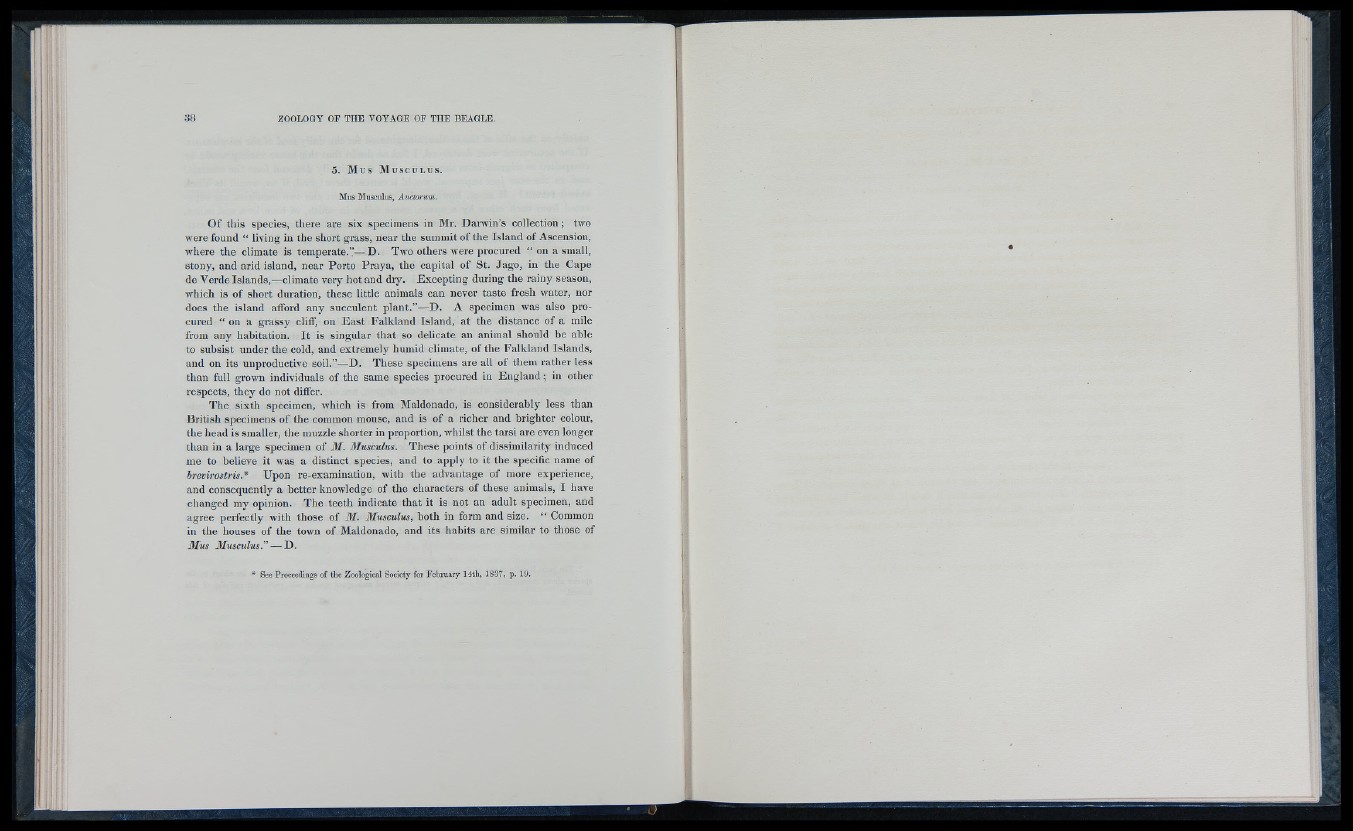
5 . M us M u s c u l u s .
JIiis JIusciilus, Auctorum.
O f this species, there are six specimens in Mr. Darwin’s collection; two
were found “ living in the short grass, near the summit of the Island of Ascension,
where the climate is temperate.’.’— D . Two others were procured “ on a small,
stony, and arid island, near Porto Praya, the capital of St. Jago, in the Cape
de Verde Islands,—climate very hot and dry. Excepting during the rainy season,
which is of short duration, these little animals can never taste fresh water, nor
does the island afford any succulent plant.”—D . A specimen was also procured
“ on a grassy cliff, on East Falkland Island, at the distance of a mile
from any habitation. It is singular that so delicate an animal should be able
to subsist under the cold, and extremely humid climate, of the Falkland Islands,
and on its unproductive soil.”—D. These specimens are all of them rather less
than full grown individuals of the same species procured in England; in other
respects, they do not differ.
The sixth specimen, which is from Maldonado, is considerably less than
British specimens of the common mouse, and is of a richer and brighter colour,
the head is smaller, the muzzle shorter in proportion, whilst the tarsi are even longer
than in a large specimen of 31. 3Iusculus. These points of dissimilarity induced
me to believe it was a distinct species, and to apply to it the specific name of
hrevirostris.* Upon re-examination, with the advantage of more experience,
and consequently a better knowledge of the characters of these animals, I have
changed my opinion. The teeth indicate that it is not an adult specimen, and
agree perfectly with those of 31. 3Iiisculus, both in form and size. “ Common
in the houses of the town of Maldonado, and its habits are similar to those of
3Ius 3hisculus.'' — D.
of the Zoological Society for February 14th, 1837, p. 19.